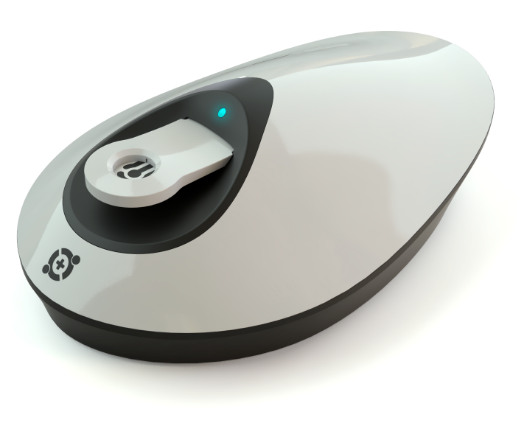Hilabvolt
Less waiting for clinical analysis test results
Reduce the time between diagnosis and treatment. Volt offers a new perspective on Point-of-Care tests, with complete, laboratory-grade results during the patient visit. A decisive, precise, and more humanized approach.
Laboratory results in
in 3-5 minutes
Volt is where the patient is, whether in a pharmacy, clinic, hospital, laboratory, or large healthcare system. The versatility of the device allows for rapid diagnoses, in different contexts, such as urgency and emergency, diagnosis of chronic and infectious diseases.

Small and portable: Perfect for quick tests
Every smallest detail of the Hilab Volt was designed to meet the highest standards, without compromising on a functional design and an intuitive experience. Carrying out a test on the Volt is divided into 5 steps.
Secure, connected and double-check results
Volt is part of the Hilab platform, which connects our Artificial Intelligence to the point of service. This allows all analyses, whether on-site or 100% remote, to go through a double-checking process. This system follows the highest cybersecurity standards.
Our service >
AI-generated
test results
- Volt uses a biosensor to measure an electrical signal generated from the test sample.
- Next, our Artificial Intelligence analyzes this value and generates the result, which is confirmed by a healthcare professional.
Technical
specifications
Methodology: Electrochemistry
Dimensions (HxWxD): 4,3 x 8,8 x 3,0 cm
Weight: 100g
Anvisa/MS Reg.: 80583710019
Sample type: whole blood or serum
Sample quantity: < 40 µL
100% online and automatic calibration
Release time: on average 3.5 minutes.

Hilab Volt Portfolio
| Quantitative | |||
|---|---|---|---|
| Test | Analyte | Minimum detection limit | Maximum detection limit |
| Ionic Calcium | Ionic Calcium | 0,74 mM | 1,70 mM |
| Blood glucose | Glucose | 20 mg/dL | 620 mg/dL |
| Potassium | Potassium | 1,0 mM | 10,0 mM |
| Sodium | Sodium | 60,0 mM | 300 mM |
| AST | AST | 10,0 U/L | 210,0 U/L |
| ALT | ALT | 10,0 U/L | 210,0 U/L |
| Qualitative | ||
|---|---|---|
| Test | Covid-19 | |
| Analyte | SARS-CoV-2 (PROT. N) | |
| CutOff (reactive/non-reactive) | 1,0 ng/mL | |
| Soon | ||
|---|---|---|
| Uric acid | Alkaline phosphatase | Ultrasensitive C-Reactive Protein |
| Anti-Xa | FSH | TAP and TTPA |
| β-hCG (pregnancy) | GT range | TSH |
| Bilirubins | Infuenza A and B | Urea |
| BNP (brain natriuretic protein) | Magnesium | Respiratory Syncytial Virus (RSV) |
| Ferritin | Respiratory Panel | B12 Vitamin |
| Iron | Lipid Profile | Vitamin D |
Do you want to bring Hilab Volt to
your patients so they can have quick and safe results
in their clinical analysis tests?
Become a partner >
Hilab Volt FAQ.
We can consider three major differences:
- portability;
- speed;
- and usability.
Despite its size, the Hilab Volt can perform the same tests as generally larger and heavier equipment, such as the pH and Blood Gas Analyzer or the Electrolyte and Selective Ion Analyzer. In addition to its size, the Volt is also very fast, with an average analysis time of 3.5 minutes.
Finally, operating the device is very simple, with capillary collection and a reduced volume of samples (40 µL), without the need for processing, as we use whole blood.
The Volt has a battery, but can also be powered by a USB cable.
The device connection is via W-Fi.
The Hilab Volt is an electrochemistry equipment, which works based on electrical signals generated by chemical reactions/interactions. The biosensor connected to the equipment transforms the signal observed in contact with the target molecule contained in the sample into an analytically useful signal. The treated analytical signal is used for diagnosis.
For current tests, the average time is 3.5 minutes.
The Hilab Volt diagnostic kit consists of 7 items, including the biosensor. Are they:
- NFC card, which identifies the test to be performed;
- Biosensors;
- Disposable pipettes;
- Isopropyl alcohol swabs;
- Dressings;
- Lancets;
- Reagent solution bottle.
For healthcare professionals: Through the Specialist Portal, where the patient is registered and each examination stage is recorded. Using this same tool, it is also possible to check the analysis of the test and release the report to the patient.
For patients: As soon as the result is released, we send the report via email and message, in addition to keeping it available on our patient app. Hilab partners also have the option of printing the report and delivering it by hand.
Point-of-care (POC) or Point-of-Care Testing (PoCT), means, in direct translation into our language, “testing at the point of care”. The term designates any type of clinical test that can be carried out inside or outside hospital or laboratory environments, but essentially at the patient care location.
Point-of-care clinical analysis tests work with some automated and easy-to-operate equipment, which allows clinical tests to be carried out at the point of patient care. In Brazil, in general, this equipment must operate from primary biological material, such as whole blood and salivary or nasopharyngeal secretions.
